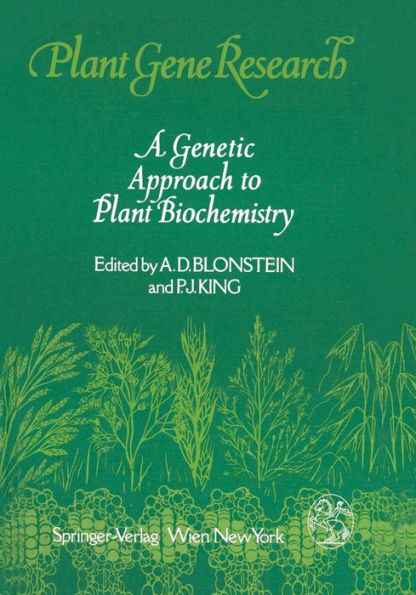A Genetic Approach to Plant Biochemistry
Biologists ask how the growth, development and behaviour of organisms happen, how these processes are co-ordinated and how they are regulated by the environment. Today the questions are phrased in terms of the genes involved, their structure and the control of their expression. Mutations (recognised by a change in phenotype) label genes and can be used to study gene structure, gene function and the organisation of the genome. This is "Genetics". Study of phenotypes down to the level of the enzymes and structural proteins coded for by genes is "Biochemistry". It is self evident that only by studying phenotype ("Biochemistry") can we do "Ge netics" and that "Genetics" (perturbation of the phenotype) is the key to understanding the "Biochemistry". There can surely be no better argu ments for a more holistic approach to biology than the massive output of knowledge from microbial "Biochemical Genetics" and the more recent revelations from "Molecular Genetic" studies of development in Droso phila.
"1102245870"
A Genetic Approach to Plant Biochemistry
Biologists ask how the growth, development and behaviour of organisms happen, how these processes are co-ordinated and how they are regulated by the environment. Today the questions are phrased in terms of the genes involved, their structure and the control of their expression. Mutations (recognised by a change in phenotype) label genes and can be used to study gene structure, gene function and the organisation of the genome. This is "Genetics". Study of phenotypes down to the level of the enzymes and structural proteins coded for by genes is "Biochemistry". It is self evident that only by studying phenotype ("Biochemistry") can we do "Ge netics" and that "Genetics" (perturbation of the phenotype) is the key to understanding the "Biochemistry". There can surely be no better argu ments for a more holistic approach to biology than the massive output of knowledge from microbial "Biochemical Genetics" and the more recent revelations from "Molecular Genetic" studies of development in Droso phila.
54.99
In Stock
5
1

A Genetic Approach to Plant Biochemistry
296
A Genetic Approach to Plant Biochemistry
296Paperback(Softcover reprint of the original 1st ed. 1986)
$54.99
54.99
In Stock

Product Details
| ISBN-13: | 9783709174630 |
|---|---|
| Publisher: | Springer Vienna |
| Publication date: | 10/01/2011 |
| Series: | Plant Gene Research |
| Edition description: | Softcover reprint of the original 1st ed. 1986 |
| Pages: | 296 |
| Product dimensions: | 7.01(w) x 10.00(h) x 0.03(d) |
From the B&N Reads Blog
